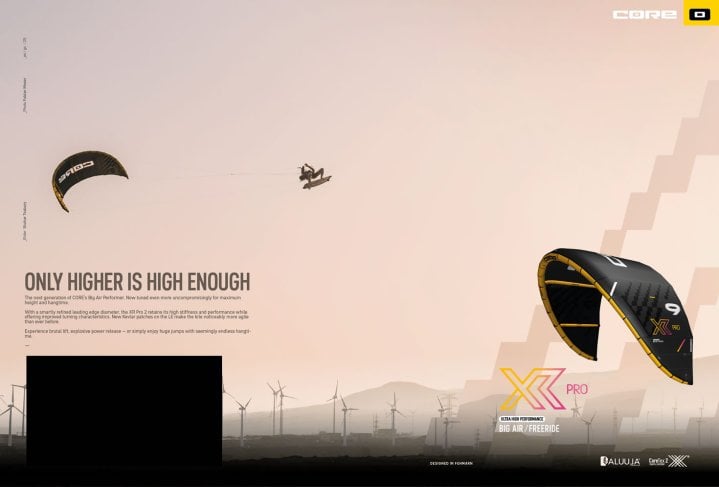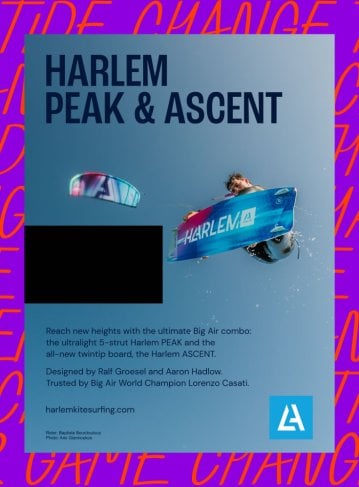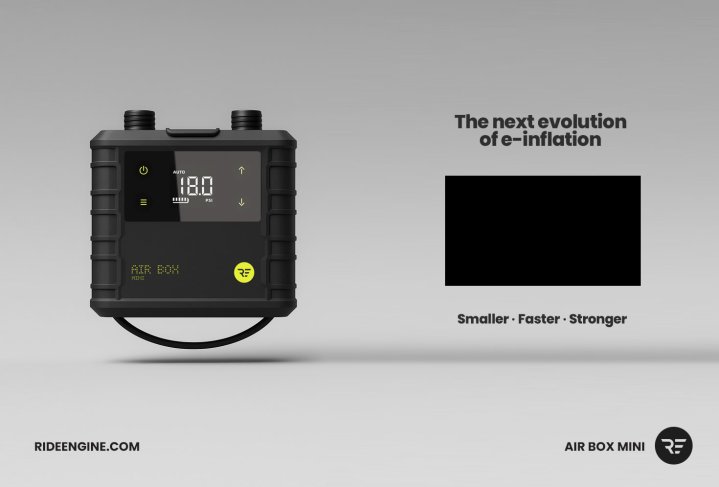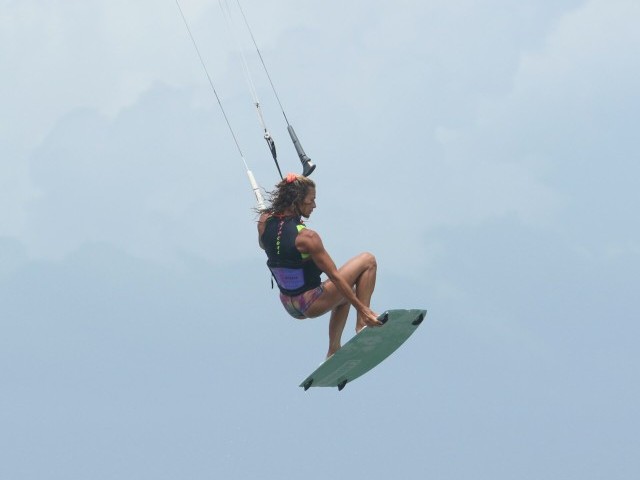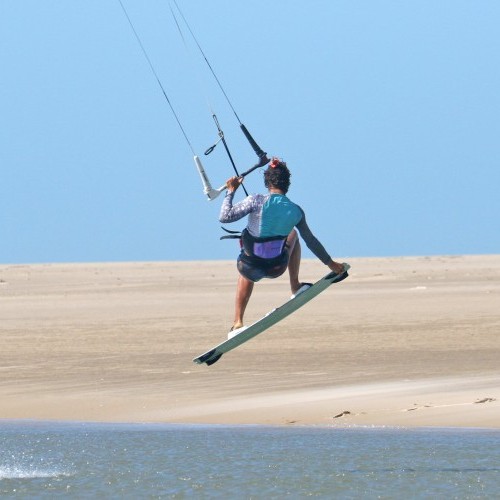
Grabbed Front to Blind Ole
Technique / Intermediate
Ok, Ladies and gents, it’s time to spice things up. For starters, we’re going to take your popped front, add some heat to the main with a tail grab, stick it to the blind for a stylish landing, and then Ole out to add the biggest cherry on top! Fear not if that sounds like a proper mouthful and leaves you a tad breathless. It reads more exhausting than it is and will surely be tasty regardless. A proper summer offering for us here in the northern half.
We’ve been through the hooked popped front to the blind, and hopefully, you’ve been practising your Oles at every possible opportunity. Adding the grab does, however, change things a little. You’ll not be used to letting go for a start; rotating with just one hand and then throwing the blind from a slightly stalled rotation will also be something fresh to get yourself acquainted with. Before diving in, it’s also worth reminding yourself that this is a hybrid move. By hybrid, we mean that although you’ll be popping to take off, you’ll also drift the kite up towards 12 for some extra float and time. It’s not a foot-to-the-floor kite at 45 grins and bears its move, but more a floaty, smooth crowd-pleaser.
Your Approach Pic A.
Your approach should be well-dialled by now, but as we often say, it won’t hurt to remind you. Come in on an edge with speed. It doesn’t want to be a massive upwind edge, but enough so that you’re resisting the kite and have tension in the lines. Your kite should be in its happy place around 11 o’clock (in this case), or 1 if you’re going the other way. Ensure your bar is trimmed close enough to drop away from it when you carve without pulling on it and have space to sheet out when you Ole. And finally, get your hands centred on the bar. You are ready! You can see that Karine has ticked all these boxes.
Flatten Off to Carve Pic B.
Once you’re ready and have spotted a flattish bit of water, you need to bear off the wind.
Bearing away suddenly helps the kite fall back in the window a bit and allows you to get into the perfect position to pop. Front leg straighter, bum over back foot, shoulders back and upwind, and head looking forwards. It also helps you land off the wind, which is a must if you want a smooth blind touchdown. Bear away by softening your knees and sitting, rolling over the board so that it flattens off. Once you’re in position, with your weight over the tail and the nose up slightly, you can carve into your pop. Drop your weight and turn the board upwind. As it’s a hybrid move, you can tweak the kite a little on the bar as you carve. Here Karine flattened her board and dropped into her default popping position before carving up hard and steering her kite up. So far, everything is pretty similar to what you’ve been practising:)
The Pop Pic C.
Even though you’ve asked the kite for a bit of help, your take-off is still coming from you – no waiting for the kite to lift. This means no pulling on the bar. Leave it on the sweet spot and explode against your edge through your back leg, kicking yourself upwind and away from the board. As you kick, release your front hand! You won’t have long to get your grab so the sooner you set things in motion, the better. You also need to initiate the front roll. As you kick and release, lift your front knee, turn your head to look behind you, and resist the temptation to throw your head down. The final piece of the jigsaw for take-off, stop your kite moving. Do this by steering it forward with your front hand, a little wrist crank to get it moving with you. Looking at Karine you can see she’s stamping hard off her back leg, and she’s released her rear hand. She’s steering the kite forwards a touch to stop it going any further whilst she’s turning her head to initiate her rotation. That’s a lot in one frame!
All About the Grab Pic D.
As soon as you’re off the water it’s all about getting the grab as soon as possible, whilst also making sure that you rotate. Fortunately, these two, a tail grab and a front roll, go together like a horse and carriage. Bring your back knee up towards you to get the tail closer. As you do this, look at where you want to grab the board, ideally around the fin on your heel-side edge. By looking you’ll turn your head further which helps keep the rotation going. Final thought here, make sure your bar is in on the sweet spot. This way, you’ll have some support, and you can make sure that it’s coming with you. Karine is looking for her grab, lifting her back leg, and has her bar in, steering her kite gently forwards.
The Grab Pic E.
As you rotate and your back knee brings the board nearer, the tail should be grabbable! You can make things easier still by dropping your front foot, which will lift the tail even more. You can also feather the bar out a tad. With the kite suddenly not pulling and lifting, it’ll feel less strenuous to grab it. At this point, all your focus will be on the grab. You can see that Karine is focused on her board, she’s dropped her front foot, grabbed her tail, and she’s eased her bar out a smidgen. Perfect!
Rotate Pic F.
With all the focus on your grab, your head is no longer leading you through your rotation. As such and unbeknown to you, you’ve unwittingly slowed and stalled your rotation. You’ve still got a way to go, so time to get a wiggle on. The good news, it’s an easy fix. Turn your head, look over your shoulder and set your eyes on where you think you’ll land. Before you know it, order is restored, and you’ll come round. As you do, hold your grab for as long as you feel comfortable and confident to do so. Here Karine has her eyes on the prize, she’s rotating around and is still holding the tail.
Throw it Pic G.
Timing is key. Just like the non-grabbed version, blind is a landing, so you’ll have more success if you treat the blind as a separate entity as opposed to an extra half rotation. It’ll be easier to throw your blind if you can feel the kite, so dip it down with your front hand. As you do this release the grab. Turn your head and shoulders away from the bar, dropping your rear shoulder. Keep your body locked and tight so that your hips and board turn with you, scissoring your legs as you rotate. Karine has released her grab, whilst turning her head, shoulders and hips away from the kite, forcing her feet and board round. Although she’s dropped her shoulder, she keeps her head up so that she stays over her board.
Stomp It Pic H.
Three pieces to make this stick. Bar out, nose down, chin up. Before you land you need to get the bar out, this way your board and legs won’t get left behind. To get the board as far around as possible make sure you land on what was the nose of your board. This way, it’ll pivot those extra few degrees when it hits. To make all this possible, you need to be over your board, and the simplest way to do this is to keep your chin up. Karine has her bar pushed out, facing upwind, her head up, and her back leg slightly bent. This way, she lands over the board, old nose first, which will help pivot the board more downwind and prevent her from edging against the kite.
The Cherry Sequence 1
Now that you’re comfortably back on the water, it’s just a little matter of an Ole to contend with. Once you’re on your feet you need to get rid of any possible tension in the lines before you can consider the Ole. Your aim is to get weight off the balls of your feet and onto your heels. This will turn the board towards the kite and give you room and slack to Ole. The secret is not to rush. Make sure your bar is all the way out by pushing your hand up. Leave it there and turn your head towards your free hand. You can see that as Karine turns her head, it rocks her weight onto her heels, and the board literally carves downwind. Wait to feel the tension go. With no tension, you can now comfortably move the bar across in front of your face. As you do this you can pull in on the bar to steer the kite back down which will give you some pull as you come through the Ole. And don’t forget to get vocal – “Ole”!
Top Tips
- Try and find some flat water. Once you have, build up to this with some fronts to blind and then add the grab.
- This is a hybrid move, and for learning purposes, it’s fine if your kite goes a bit too far. It’ll make landing tricky, but you’ll have more time and confidence to grab and then throw the blind.
- Remember that it’s a front-to-blind, not one and a half. So, wait and just before you land, release the grab and throw the blind.
- Don’t worry about the Ole, it’s a pure showboating, feel good, claim of the century add on. Make sure you stick your landing, then you can turn your head, weight your heels and get vocal.
- OK, have a look at the sequence for a step-by-step visual.
Common Problems
Not getting the grab. Make sure you look at the tail! If you turn your head too much, thinking about getting a quick rotation you’ll miss it. If it seems out of reach, straighten your front leg.
Stopping on landing. If you’ve got enough momentum and speed coming in, then the only reason for this is that the kite is too high and has drifted behind you. Try popping with less kite AND tug the kite down before releasing your backhand.
Falling in backwards/catching your heelside edge. This is often the result of not sheeting the bar out when throwing the blind. Your feet get left behind and you’ll catch your edge. Also don’t rush the Ole, by leaning back to make room for the bar to pass. Make a point of landing and shifting wait first. This is only possible if you trim your bar and head downwind to pop.
Burying the nose of the board and sinking when Ole-ing. If you’re making the landing, setting the Ole in motion only to then nose dive. This is usually because you’re rushing into Ole and turning your shoulders to much as you turn your head. The Ole shouldn’t be aggressive if you shift your weight onto your heels first.
Keystones
- Off-the-wind approach
- Stamp, release backhand and look back
- Focus on grab, no rotation
- Turn your head to continue
- Throw blind, don’t rush Ole
This technique article was in Issue 106 of IKSURFMAG.
Related
By Christian and Karine
Christian and Karine have been working together as a coaching team, running improver to advanced kitesurfing clinics since 2003.




